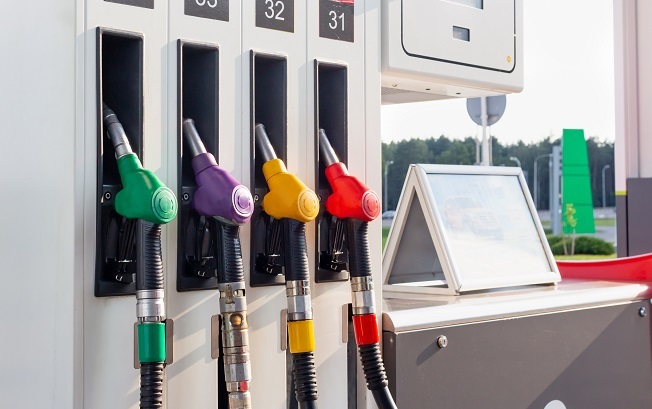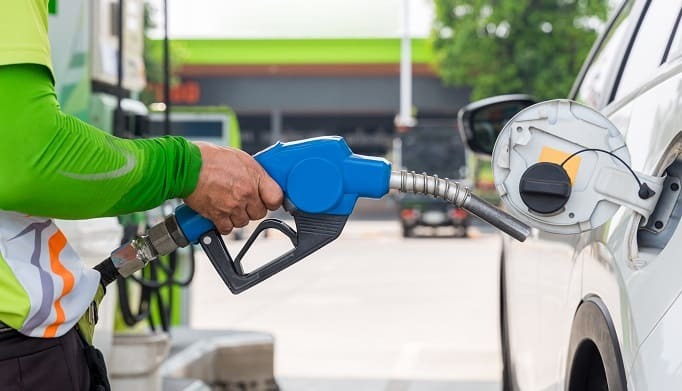
 Data Structure
Data Structure Networking
Networking RDBMS
RDBMS Operating System
Operating System Java
Java MS Excel
MS Excel iOS
iOS HTML
HTML CSS
CSS Android
Android Python
Python C Programming
C Programming C++
C++ C#
C# MongoDB
MongoDB MySQL
MySQL Javascript
Javascript PHP
PHP
- Selected Reading
- UPSC IAS Exams Notes
- Developer's Best Practices
- Questions and Answers
- Effective Resume Writing
- HR Interview Questions
- Computer Glossary
- Who is Who
What is the full form of GDI?
Introduction
Gasoline Direct Injection (GDI) is employed by modern combustion engines as a fuel delivery system to increase engine performance and economy. GDI distributes gasoline directly into the combustion chamber as opposed to the intake manifold, unlike conventional fuel injection systems.

As a result, the air/fuel combination can be controlled more precisely, which improves fuel burn efficiency. Due to their increased fuel efficiency and less emissions, GDI engines are becoming more and more widespread in passenger automobiles. GDI engines may produce greater amounts of particle emissions, which must be carefully regulated to comply with ever-stricter environmental requirements. This presents new issues for engine designers. Overall, GDI is a significant advancement in combustion engine technology and a step toward more environmentally friendly transportation.
Working Principle of Gasoline Direct Injection
Instead of spraying fuel into the intake manifold, the gasoline direct injection (GDI) operating concept includes injecting fuel directly into the combustion chamber of an engine. As a consequence, the air/fuel combination may be controlled more precisely, leading to increased effectiveness and performance.
In a GDI engine, fuel is kept in a high-pressure fuel rail and delivered to each injector individually. The engine control unit (ECU) manages the injectors to deliver the appropriate quantity of gasoline at the appropriate time straight into the combustion chamber. The ECU uses data from a variety of engine sensors, including the oxygen sensor and the throttle position sensor, to calculate the ideal timing and quantity of fuel supply.
The air that has been sucked in via the intake valve combines with the fuel as it is fed into the combustion chamber. After that, the piston compresses the resultant combination of fuel and air, raising the pressure and temperature within the cylinder. The compressed mixture burns quickly after being ignited by the spark plug, creating tremendous pressure that forces the piston downward and powers the crankshaft.
Better fuel efficiency and fewer emissions result from the more precise control of the fuel delivery process made possible by the GDI system. Additionally, it permits higher compression ratios, enhancing performance and efficiency even more. To fulfil environmental laws, particle emissions must be carefully controlled because of the greater pressure and temperature within the combustion chamber.
Advantages of Gasoline Direct Injection
Compared to conventional fuel injection systems, gasoline direct injection (GDI) has a number of benefits, including
Improved Fuel Efficiency Because GDI engines can inject fuel directly into the combustion chamber, giving them more precise control over the air/fuel mixture, they are more fuel-efficient than conventional engines. This makes it possible for a leaner burn, which lowers fuel use and pollutants.
Better Performance Because they can deliver a more precise and controlled air/fuel mixture to the combustion chamber, GDI engines can generate more power than conventional engines. This is because better combustion leads to increased power.

Reduced Emissions Due to a more effective combustion process, GDI engines emit fewer pollutants, notably hydrocarbons and carbon monoxide. But GDI engines can also produce more particulate emissions, which need to be carefully controlled.
Lower Maintenance Because they have fewer moving parts and less frequently worn fuel injectors, GDI engines require less maintenance than conventional engines.
Improved Cold-Start Performance Because GDI engines can deliver a more concentrated fuel charge directly to the combustion chamber, they operate better in colder weather than conventional engines and can start more easily.
Overall, GDI technology has a number of advantages over conventional fuel injection systems, including increased fuel economy, enhanced performance, and less emissions. The management of particle emissions and maintaining long-term durability, in particular, provide significant difficulties for engine designers.
Disadvantages of Gasoline Direct Injection
Gasoline direct injection (GDI) has a number of benefits, but there are some drawbacks as well. Among the most significant drawbacks are
Higher Cost Due to the need for more sophisticated fuel injection technology, GDI engines may be more costly to produce and operate than conventional engines.
Higher Particulate Emissions Higher levels of particulate emissions from GDI engines, including soot and other fine particles, may be hazardous to both human health and the environment.
Fuel Quality Concerns GDI engines are more sensitive to the quality of the gasoline than conventional engines, and using poor fuel may harm the engine and decrease its performance.
Carbon Build-up Because the fuel is not sprayed onto the intake valves, GDI engines are more vulnerable to carbon build-up. Over time, this can result in issues with engine performance and decreased fuel efficiency.
Potential Engine Damage The greater operating pressures of GDI engines compared to conventional engines may cause extra stress on engine parts including the fuel injectors, fuel pump, and engine valves. This may eventually lead to greater maintenance expenditures and even engine damage.
Overall, GDI engines have a lot to offer in terms of performance, emissions, and fuel economy, but they also bring new difficulties for both engine designers and vehicle customers. To fully profit from GDI technology, careful regulation of particle emissions and fuel quality is essential.
Conclusion
An engine's combustion chamber receives fuel directly from the fuel injection system known as gasoline direct injection (GDI), as opposed to the intake manifold. Because they can deliver better fuel efficiency, more power, and lower emissions, GDI systems have grown in popularity in recent years.
Overall, GDI technology is a significant development in the automotive sector since it provides a number of advantages that may assist to increase the effectiveness and performance of gasoline engines. When shopping for a new car, consumers should carefully consider the advantages and disadvantages of GDI technology and select a model that suits their unique needs and priorities.
FAQs
Q 1 Is Gasoline Direct Injection more fuel efficient than traditional port fuel injection?
Ans: Yes, GDI typically uses less fuel than conventional port fuel injection because it can provide more accurate fuel metering and combustion control. Additionally helping to increase fuel efficiency, GDI systems can lower engine knock and enhance emissions performance.
Q 2 Do all modern gasoline-powered engines use Gasoline Direct Injection?
Ans: No, GDI isn't used by all contemporary gasoline-powered engines. Although GDI has gained popularity recently, many engines continue to use conventional port fuel injection or other fuel injection systems.
Q 3 How does Gasoline Direct Injection affect engine performance?
Ans: In a number of ways, GDI may enhance engine performance. GDI systems may provide more accurate fuel metering and better combustion control by pumping gasoline directly into the combustion chamber, which enhances power output and fuel economy. Additionally, GDI can improve emissions performance and lessen engine knock.

